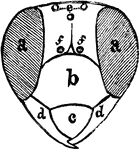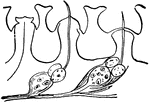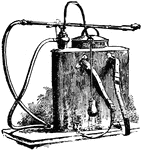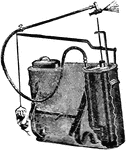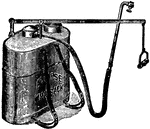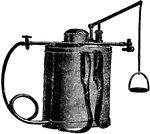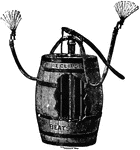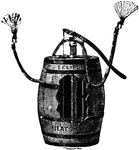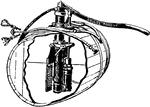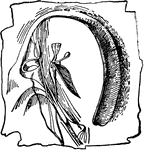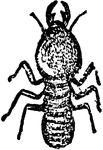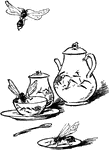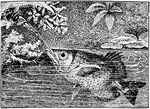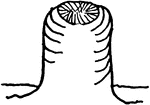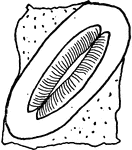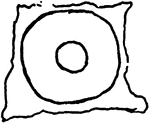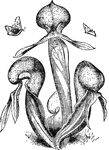
Darlingtonia
"Of the two forms of pitcher in this genus the larger and ordinary form, that of the adult plant, is…
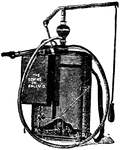
Deming
A portable barrel outfit, called a Deming kerosene emulsion knapsack used to spray insecticide
Sexual Organ of Insects
Ovarian tubes of one side, in Polistes, showing eggs in all stages of development, with nutritive…

Sexual Organ of Insects
Male organs of May-beetle. One side only beyond the ductus ejaculatoris, duct. ejac.…
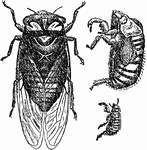
Cicada Pruinosa
This species can be heard in summer and autumn at most any time making its peculiar trilling noise in…

Cicada Septendecim
Also known as the Seventeen-Year Locust, derives its specific name from the fact that it makes its appearance…

Planthopper
Otiocerus coquebertii, a small insect of a somewhat elongated form and having a small projection in…

Fulgora
A most singularly-formed insect; the front part of its head being much prolonged, and projecting upward…

Black Leaf-Leg
A small homoterous insect, Phylloscelis Atra (var. pallescens) is not uncommon among…
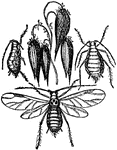
Aphis Avence
Grain or oat-plant louse, does much injury to grain, and especially to oats, but is also found on wheat,…

Aphis Gossypii
Also known as the Cotton-plant louse, is a great nuisance to the planters, especially when the plants…
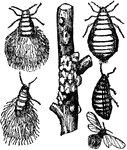
Wooly Aphid
Eriosoma Lanigera, or the Wooly Apple-Tree Blight. These insects appropriate for their generic name…
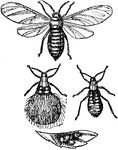
Wooly Aphid
Eriosoma Imbricata. Found very abundantly on birch in Maryland in October. These insects cluster together…
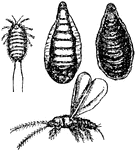
Aspidiotus Citricola
Scale-insect, was found on imported lemons in Jacksonville, Fla. This insect is said to be allied to…

Moth Lantern
From the well known nocturnal habits of moths, and the certainty of their being destroyed by a light,…
Army-Worm Killer
It consists of a sheet-iron furnace, having the form of a half cylinder, tapered at the end's, in which…

Paris Green Sifter
Paris green was used as a popular pigment in artist's paints because of the brilliance of the green.…

Insect Sifter
The rear end of the machine is mounted upon two wheels. A trough, with a runner-like bow, containing…

Crushing Insect Sifter
The machine is supported upon two wheels, one in the rear of the other. The body is hopper shaped, with…

Apple Plant Louse
The females deposit their eggs, which are small, oval, and black, on twigs and bark in the autumn; the…

Apple Plant Louse
The females deposit their eggs, which are small, oval, and black, on twigs and bark in the autumn; the…
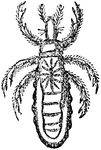
Crab Louse
Pediculus Pubis. The crab-louse is gray-black and is a much broader square form than the other two species…
